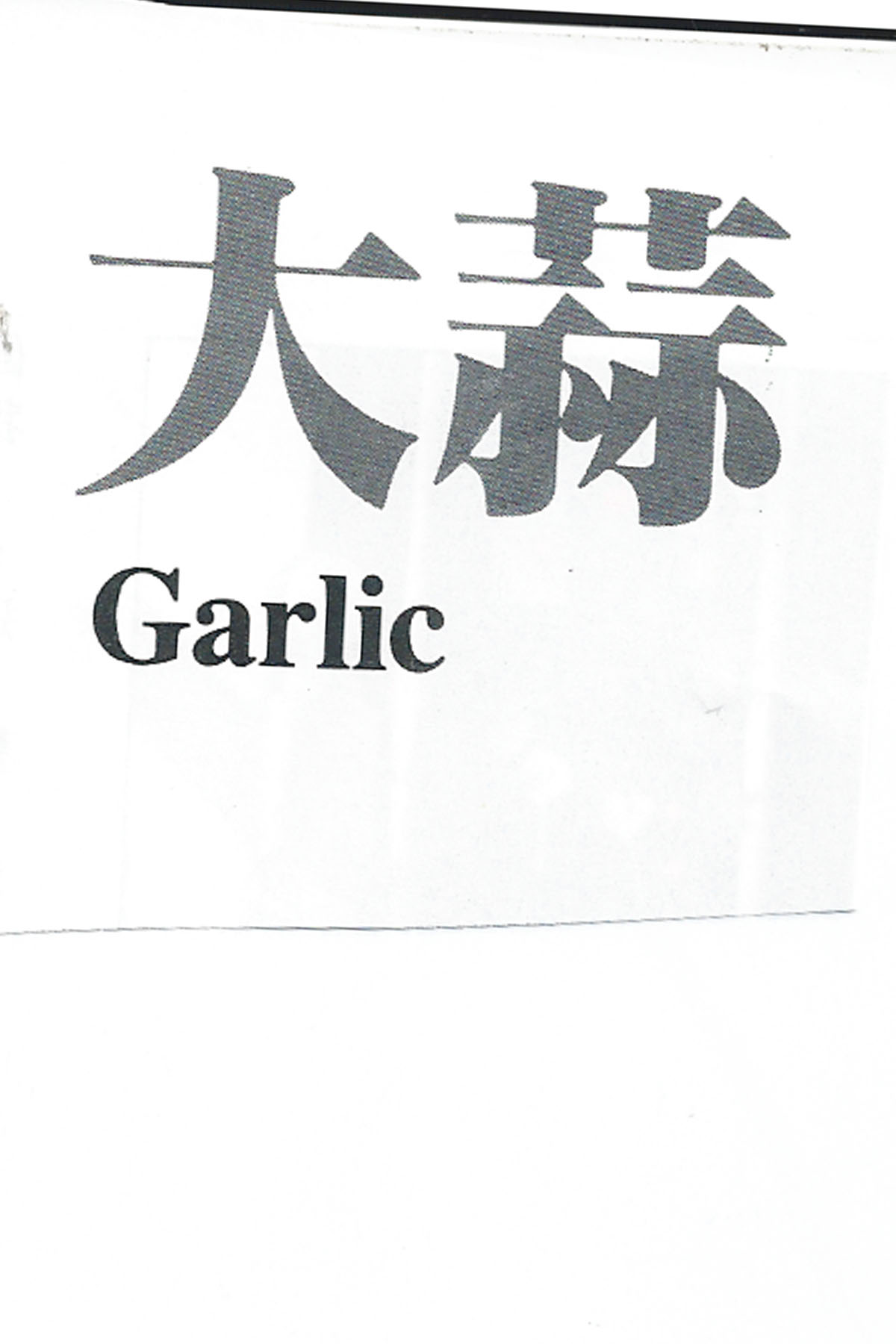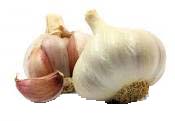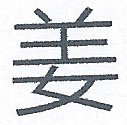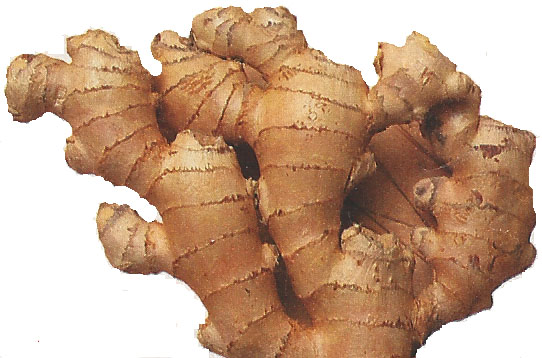
| What is Flavor and Fortune? |
| How do I subscribe? |
| How do I get past issues? |
| How do I advertise? |
| How do I contact the editor? |
Read 13323997 times
Connect me to:
| Home |
| Articles |
| Book reviews |
| Letters to the Editor |
| Newmans News and Notes |
| Recipes |
| Restaurant reviews |
| Article Index (all years, slow) |
| List of Article Years |
| Article Index (2026) |
| Article Index (last 2 years) |
| Things others say |
| Related Links |
| Log In... |
| Authors |
| Categories & Topics |
Garlic and Ginger: Chinese Lore and Loves
| by Jacqueline M. Newman |
Sauces, Seasonings, and Spices
Summer Volume: 2016 Issue: 23(2)
GARLIC has long been used in the Chinese cuisine and in their medicinal thinking. This common bulb, said to have antibacterial and antiviral effects, is botanically known as Allium sativum. Using it has shown improvement in some patients with various types of cancers and assorted cardiovascular diseases. Many Chinese people take a garlic extract three times a day for a cold or signs of the flu. Were this not enough, newer research says it protects the liver from aflatoxin damage and can be an anti-parasitic agent.
‘Stinking rose,’ one of garlic's nick-names, is composed of more than two hundred sulphur compounds. They are the why for its flavor, aroma, and for its medicinal properties. Long ago, folks said that when raw it was limited to curing toothaches and whooping cough. Then when made into an oil, extract, powder, tablet, capsule or in liquid form, it had many more uses.

 Many folk have no problem ingesting this bulb while others report heartburn and/or flatulence, to say nothing of bad breath. People who take anticoagulants should not take any without the advice of their physician. Why, because it cancan cause allergies, contact dermatitis, lethargy, soft stools, and dehydration. For those who want more information, they should contact the National Garlic Information hotline at 1-800-garlic.
Many folk have no problem ingesting this bulb while others report heartburn and/or flatulence, to say nothing of bad breath. People who take anticoagulants should not take any without the advice of their physician. Why, because it cancan cause allergies, contact dermatitis, lethargy, soft stools, and dehydration. For those who want more information, they should contact the National Garlic Information hotline at 1-800-garlic.
Researchers report that garlic contains more those many compounds and that may be why there are questions about its safety, effectiveness, and dosage. Some include its causing fever when raw. Few know how much they should be taking, and for how long they should ingest it. Do you?
Interest in the medicinal effects of garlic are not new. The Chinese has known of its value since 3000 BCE. The Egyptians have know the same since 1500 BCE. Recent chemical and pharmacological research, at least that since since 1944, did begin after Chester Cavallito isolated its sulphur-containing compounds and named them allicins. One hundred years before that, T. Wertheim wrote about them when he found some folk using steam distillation of their bulbs after research was done on onions. In 1961, Arthuri Vivtanan received the Noble Prize for his efforts on these related bulbs. Current efforts support the fact that garlic reactions need a co-factor to impact nutritional and physiological properties when they lower blood lipid levels, reduce clotting, and so forth.
Before and since, these bulbs have been hailed for everything from their aphrodisiac abilities to treating athlete’s foot. However, none of these efforts know if one should take one clove a day, or more or less to keep a person healthy. Though answers are not in, many still eat these cloves and often.
World history is rife from Chinese turtle bones to the Talmud texts that share intake anecdotes to ward off vampires, demons, dragons, and deleterious health. Many eat garlic raw, cooked, or aged to do so, and the Chinese ingest more than any other food supplement. This inexpensive medicine might taste worse than many others, but a large number do enjoy its potential even though they do not know how much could be best. They know that cooking enhances the taste of their foods, and so for them, that is enough.
Some Chinese use garlic when someone faints from excess heat. They crush a clove and dilute its juice with water dripping it into the nostrils. In the case of suspected food poisoning, three to five raw cloves, they say, if chewed can provide stomach relief. Some say, if mosquitoes or centipedes bite, to finely chop one raw clove and rub it as a paste onto the bite to reduce potential swelling. In case of vomiting, the Chinese say to crush a raw clove, mix it with honey and hot water, and that will reduce upcoming symptoms. There are these and other Chinese items of garlic lore that include that to be healthy, one needs to eat garlic more than once a week. What do you think?
GINGER, another medicinal, can be purchased and used fresh, dried, and preserved. It is popular as a seasoning and as a medicine; and long-time subscribers may recall way back in 1995 in Volume 2(4), on pages 12 and 13, that Eva Koveos provided information about these gnarled rhizomes botanically known as Zinziber officinale Roscoe.
Native to China and tropical Asia, most simply peel, slice, dice, or mince as they do for garlic, then fry, stir-fry, simmer, or stew ginger depending on their needs or the dish under preparation. Many rarely think about the history, and are quite familiar with its curative properties, which are many.
In China, ginger was in use before the 18th century BCE as both an herb and as a medication. Its culinary uses were probably even earlier. They did introduce it to the Mediterranean region before the first century BCE as did Arabs and others who traveled the Silk Road. They showed it off to others as a spice to take when they had health issues.

 Often and incorrectly called ‘ginger root,’ this rhizome grows best in warm temperatures with lots of humidity. It has been used for multiple generations to calm and warm an overactive stomach, reduce nausea, prevent vomiting, aid digestion, and reduce the symptoms of high cholesterol and high blood pressure. As was garlic, it has been used as a preservative, a cough suppressant, a healer when added to tea, and for many other purposes. To know more about it, we suggest this magazine’s Index, many books, and contacting the Herbal Research Foundation at 1-800-748-2617.
Often and incorrectly called ‘ginger root,’ this rhizome grows best in warm temperatures with lots of humidity. It has been used for multiple generations to calm and warm an overactive stomach, reduce nausea, prevent vomiting, aid digestion, and reduce the symptoms of high cholesterol and high blood pressure. As was garlic, it has been used as a preservative, a cough suppressant, a healer when added to tea, and for many other purposes. To know more about it, we suggest this magazine’s Index, many books, and contacting the Herbal Research Foundation at 1-800-748-2617.
 Harvested when young, ginger is very aromatic, tints things pink, and has ivory-colored flesh. Garlic is available year-round, some ginger is, too young shoots often is not. Both are piquant, ginger best when young and fresh in June or July, and that way through September. In the US more than half of the fresh ginger comes from Hawaii, most of the rest comes from China. Garlic comes from small and large farms anywhere and everywhere.
Harvested when young, ginger is very aromatic, tints things pink, and has ivory-colored flesh. Garlic is available year-round, some ginger is, too young shoots often is not. Both are piquant, ginger best when young and fresh in June or July, and that way through September. In the US more than half of the fresh ginger comes from Hawaii, most of the rest comes from China. Garlic comes from small and large farms anywhere and everywhere.
Both are plentiful in Asian markets, and though often not seen, ginger has flat leaves, and needs no peeling when young. Garlic, on the other hand, always needs to be peeled. Ginger, if too piquant, can be sliced and tossed with coarse salt. In half an hour, rinse and dry it to tone down its piquancy.
Records tell us that ginger was used during the Zhou and Han Dynasties (1200 BCE - 221 CE) when it was revered as a symbol of purity and healing. Since then, probably every Chinese household has some in their larder for perfect cookery and health reasons. Many love both and use both for many things including to improve or counteract strong culinary aromas and to improve many an ailment.
The Chinese add a thin slice of ginger in the morning to their congee; this gets their blood flowing. Some add it with brown sugar to do the same or they add twice that amount to reduce the common cold, should they have one. Some, in cold weather, add it to their tea for warmth and energy. Others advise they slice or dice it and mix it with salt then wrap these in a few layers of gauze-like material, dip it in cold water, and rub it over a swollen joint or a swollen spot. For those with hiccups, they crush that slice and mix it with juice and honey then they eat this as many as three times a day. Ginger is a staple of many diets and health plans. In use from Confucius to today, there are those that paste it on the door of their new baby to keep evil from slipping in, or they put some in this infant's crib.
Garlic in Chinese, is suan and it can be violet or white. Its nature is warm, it impacts the stomach, spleen, and lungs, and it neutralizes poisons, induces sweating, and eliminates worms. Ginger is jiang or shen jiang; and it is also warm and impacts the same three organs. It also neutralizes poisons, induces sweating, and it disperses cold. The Chinese consider both yang or hot foods and they use them to balance yin foods. Grandmothers see to it that their granddaughters get lots of either or both after their granddaughter gives birth; and they like to make them Pig’s Foot Soup with lots of ginger and garlic to restore the yang in their system.
Some did rename this as ‘baby ginger’ but in the 1500s, Henry VIII said one should raise the age of use because he felt it was a cure for the plague and therefore, valuable among young and old alike. Westerners, since the time of the Silk Road, knew they could give either or both to young or old, fresh or dried. The ginger, in particular, had traveled to Europe and elsewhere with tales of its use. In fact, ginger was so popular in word and deed that ground ginger found its way to many a table next to the salt and pepper shakers. Garlic could be there of find its way into many a Chinese dish.
Some ginger grew as tall as a person if stood up. We recommend purchasing yours with short knobby sections so as not to be stringy or tough. Popularly grown on small farms worldwide, ginger also grows well in volcanic soil with crushed coral and only a little fertilizer. Some believe it is related to galangal and it is. So is turmeric and cardamon, all are in the Zingiberaceae family.
Some of the best preserved and candied ginger is crystallized and from Queensland in Australia. This is Buderim Ginger, known worldwide. For those that know it not, they can contact them at 6920 Knoll Center Parkway in Pleasantor CA 94566 or call them at 1-800-551-5284.
Less popular is the word gari, though most have eaten some. It is pickled ginger as that found in sushi restaurants. Made with sugar, salt, vinegar, some preservatives, and young ginger, it is naturally pink, and comes sliced paper thin. We recommend it to cleanse the palate and compliment ones raw fish.
Ginger, in syrup or when candied, is often soaked in one or another syrup or coated with lots of sugar, often with licorice, vinegar, and/or salt. Some folks like theirs preserved in wine or in coarse sugar, or they make it as a sauce, also curried.
Some recommend substituting one form of ginger for another. We recommend not. The taste and the textures will be different. Most know that, and they know to add it to their tea making a ‘tonic’ or ‘additive‘ for their health. Dried ginger was so used at least as early as in the Tang Dynasty (618 - 907 CE), and this did soothe the stomach and the soul, the taste buds, too.
We have mentioned many uses of ginger but did neglect a few. Here, we share that it is has been and still is used for toothaches, to reduce a fever, and for gout, also to retard spoilage in fish, meat, and poultry.
Below are a few recipes you should try for taste and health. Also, do check out that early article for its Beef with Young Ginger recipe; we attest that it is one of the most popular ones that uses fresh ginger. Here are others for dishes with garlic and/or ginger; enjoy them all!
| Pork Ribs and Scallops in Soup |
|---|
5 dried scallops, boiled for one hour, then drained and cooled, then torn into the thinnest strips possible 1 pound pork ribs cut into one-inch pieces ½ pound daikon, peeled and diced or very thinly sliced 2 large carrots, peeled and diced 1 inch fresh ginger, peeled and sliced, then each slice smashed, and then diced 1 Tablespoon goji berries Preparation: 1. Put pork ribs into one quart of boiling water, and simmer for one hour, then remove them and strain and discard any solids. Next rinse the pot and return the ribs and the strained liquid. 2. Add the rest of the solid ingredients but not the goji berries and add another quart of water. Bring this to the boil for five minutes, then reduce the heat and simmer for thirty minutes, then add the berries and simmer another ten minutes. Now serve in individual soup bowls. |
| Kunming Lamb or Goat with Garlic, and Greens |
|---|
1 pound lamb or goat fillet, sliced thin 2 teaspoons each, dark soy sauce, rice wine, and sesame oil ½ teaspoon each, coarse salt and freshly ground pepper 2 Tablespoons cornstarch 1/4 cup vegetable oil 5 fresh chili peppers, some hot some not 5 peeled and crushed fresh garlic cloves ½ cup fresh coriander leaves, coarsely chopped Preparation: 1. Mix meat, soy sauce, rice wine, and sesame oil, them add the salt and pepper and the cornstarch. Let this marinate for half an hour, then drain and dry the meat with paper towels. 2. Heat a wok or fry pan, add the oil, and fry the drained marinated meat stir-frying it for two minutes. Next add the chili peppers and the garlic and stir for another minute. 3. Now put this in a pre-heated serving bowl, sprinkle the coriander leaves on top, and serve. |
| Mandarin Fish Stew |
|---|
2 pounds firm white-fleshed fish, skinless and boneless, cut into two-inch pieces 2 Tablespoons brown sugar 2 teaspoons Siracha sauce 2 Tablespoons vegetable oil 2 medium zucchini, angle-cut 2 stalks celery, angle-cut 1 large carrot, peeled and angle-cut 1 onion, cut in large wedges 8 cloves fresh garlic, peeled cut in halves, then smashed 1 knob fresh ginger, peeled, thick-sliced, then each slice smashed 2 Tablespoons vegetable oil Preparation: 1. Mix pieces of fish with the brown sugar, the Siracha sauce, and the vegetable oil, and let this rest for ten minutes. 2. Heat a wok or fry pan, and fry the fish mixture until light brown, then add all the vegetables, and stir-fry for three minutes, then remove to a bowl, and serve. |
| Fried Rice with Doufu |
|---|
5 cups hoot cooked rice 5 fresh Shiitake mushrooms, stems discarded, caps coarsely diced 2 Tablespoons vegetable oil, divided ½ pound firm doufu, chopped coarsely 2 eggs, beaten well, made into two omelets, and coarsely sliced 1 knob fresh ginger, peeled and coarsely minced 5 cloves fresh garlic, peeled and coarsely minced 5 scallions, cut in half the long way, then thinly angle-sliced 1 teaspoon granulated sugar ½ cup frozen peas ½ cup bean sprouts, tails removed and discarded Preparation: 1. Dry-fry the rice with the diced mushroom pieces for two minutes, then add the oil, and fry for two more minutes. Now remove to a bowl. 2. Heat half the oil, and fry half the doufu until tan, then ad the omelet strips, the rice, the garlic, and the ginger, and stir-fry for two minutes before adding the suar, peas, and the bean sprouts. Stir for two minutes, then mix with the rice mixture, and return to the bowl, and serve. |
| Garlic-stuffed Mushrooms |
|---|
20 medium fresh shiitake mushrooms, stems discarded 2 teaspoons cornstarch or water chestnut flour ½ pound ground turkey, ground chicken, or ground firm doufu 5 cloves fresh garlic, peeled and ground with the poultry and/or doufu 1/4 cup scallions, minced coarsely 3 Tablespoons thin soy sauce 1 Tablespoon minced fresh ginger 1/4 chili pepper, seeded and minced 1 egg white Preparation: 1. Dust gill-side of the mushrooms with the cornstarch or water chestnut flour. 2. Mix all other ingredients except the mushrooms and divide this into twenty batches and put one batch on each flour-side of a mushroom. 3. Broil the mushrooms about four inches from the heat source, for about five minutes, then serve. |
| Abalone, Fish, Meat, and Vegetables |
|---|
1 pound ground pork 5 slices fresh ginger, peeled, sliced, asashed, and then minced 2 Tablespoons thin soy sauce 2 Tablespoons granulated sugar 2 Tablespoons Chinese brandy or rice wine 1 scallion, minced 1 egg, beaten 1 heaping Tablespoon cornstarch 5 dried Chinese black mushrooms, soaked for half an hour, stems discarded, then slivered ½ pound Chinese cabbage, slivered ½ pound bamboo shoots, shredded ½ pound winter melon, peeled and shredded or cubed ½ pound melting mouth peas, stingy edges removed and discarded, then slivered 1 pound doufu, cut into half-inch squares (optional) 4 ounces canned abalone, sliced thin, then cut into thin strips Preparation: 1. Mix ground pork, ginger, soy sauce, sugar, brandy or wine, scallion pieces, egg, and the cornstarch and make into small balls, and refrigerate covered overnight. 2. Mix mushrooms, cabbage, bamboo shoots, and peas. 3. Add meatballs and the vegetables and the winter melon with three quarts of boiling water, after it boils, add the abalone and turn the heat to the simmer, then add the doufu if using it, and the abalone and simmer for three minutes, then serve every person a heaping ladle of the meat, fish, and vegetable mixture, and let them serve themselves as much liquid as they wish. NOTE: Instead of the abalone, one can substitute half pound of cooked and deveined shrimp or half pound diced cooked crab, each shrimp and piece of crab cut into half-inch pieces, and/or half pound any white fish, and this should be diced into half-inch cubes. Add these in place of the abalone; a friend says any of these can be added with the abalone sliced and then cubed in half-inch squares. |

Copyright © 1994-2026 by ISACC, all rights reserved
Address
3 Jefferson Ferry Drive
S. Setauket NY 11720